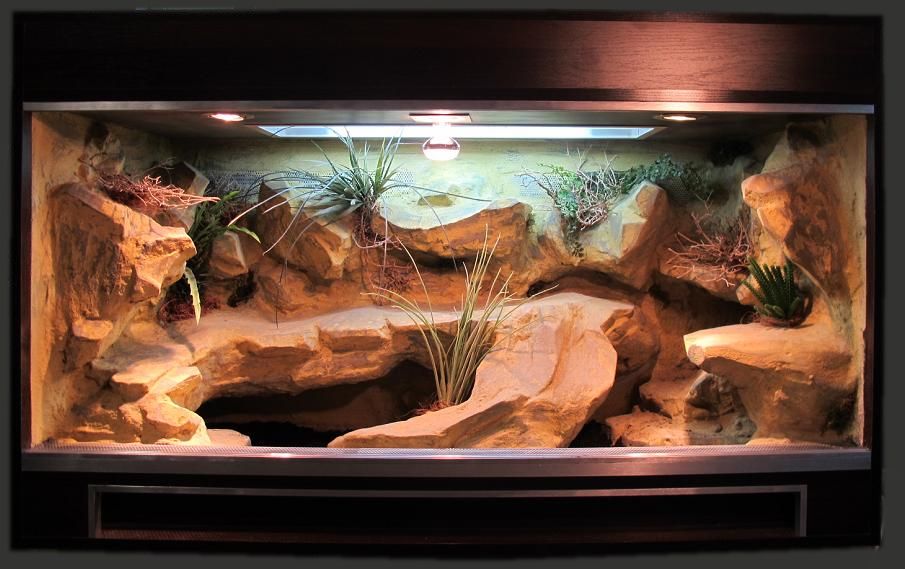As an avid reptile enthusiast and a proud owner of several geckos, I understand how critical the right decor is for the well-being of these incredible creatures. Setting up a gecko tank isn’t just about aesthetics; it’s about creating a thriving environment that mimics their natural habitat. In this article, we’ll explore various aspects of gecko tank decor, ensuring your pets are happy, healthy, and visually stimulated.
Why Is Proper Decor Important for Geckos?
Geckos are not just beautiful; they are also fascinating creatures that require specific environmental conditions to thrive. A well-decorated tank can:
- Provide hiding spots for security
- Encourage natural behaviors
- Promote physical activity through climbing and exploring
- Support humidity and temperature requirements
Incorporating the right decor can significantly improve your gecko’s quality of life, reducing stress and ensuring they remain active and engaged.

Choosing the Right Substrate for Your Gecko Tank
Substrate is the material placed on the bottom of the tank, and choosing the correct one is crucial for your gecko’s health.

Types of Substrate
| Substrate Type | Description | Pros | Cons |
|---|---|---|---|
| Reptile Carpet | Durable, reusable fabric mat. | Easy to clean, prevents impaction. | Can retain odors if not cleaned regularly. |
| Paper Towels | Easy to replace and clean. | Affordable, non-toxic. | Less natural feel, not suitable for burrowing species. |
| Coconut Fiber | Natural, biodegradable option. | Absorbs moisture well, good for humidity control. | Can cause impaction if ingested. |

Recommendation
For most gecko species, reptile carpet or paper towels are excellent choices, providing safety and ease of maintenance.

Creating Hiding Spots: The Essential Element of Gecko Decor
Geckos are naturally secretive and need places to hide to feel secure. Incorporating various hiding spots into your tank design can mimic their natural environment and significantly reduce stress levels.

Types of Hiding Spots
- Commercial Hides: Pre-made hides can be found in pet stores, designed specifically for reptiles.
- Natural Hides: Consider using rocks, logs, or cork bark that offer a more natural appearance.
- DIY Options: A simple cardboard box or a small plastic container can serve as an effective hide.

Conclusion on Hiding Spots
The goal is to create a tank that allows your geckos to explore while also providing ample hiding spots. Mix and match different types of hides to create a diverse environment.
Plants: Enhancing Aesthetic Appeal and Environmental Quality
Live plants can elevate your gecko’s tank decor, providing climbing opportunities, natural aesthetics, and additional hiding spots.
Types of Suitable Plants
| Plant Type | Benefits | Care Level |
|---|---|---|
| Pothos | Safe for geckos, easy to care for, helps with humidity. | Low |
| Spider Plant | Non-toxic, good for air quality, provides hiding spots. | Low |
| Ferns | Creates humidity, offers cover. | Medium |
Important Note
While live plants are great, ensure they are non-toxic to your geckos. If you’re concerned about maintenance or potential ingestion, consider using high-quality artificial plants.
Climbing Structures: Vital for Active Geckos
Many gecko species thrive in environments with plenty of vertical space to climb. Including climbing structures in your tank makes it more engaging and fulfilling for them.
Climbing Options
- Branches: Natural wood branches can be arranged in various ways.
- Rocks: Flat rocks can create platforms and interesting layouts.
- Commercial Climbing Logs: Available in pet stores tailored for reptile tanks.
Final Thoughts on Climbing Structures
Always ensure that climbing structures are stable and secure to prevent any accidents. Arrange them to create different levels and enhance the visual complexity of the tank.
Humidity and Temperature Control: Essential for Gecko Health
Importance of Humidity
Different species of geckos have varying humidity requirements. Understanding your specific gecko’s needs is vital for creating a suitable environment.
- Leopard Geckos: Need lower humidity levels; around 30-40% is ideal.
- Crested Geckos: Require higher humidity levels; around 50-70% is recommended.
Heat Sources and Thermoregulation
Geckos require a temperature gradient in their enclosures, with a warm side and a cooler side. Use heat mats or ceramic heat emitters to maintain appropriate temperatures.
Tips for Maintaining Ideal Conditions
- Use a digital thermometer and hygrometer to monitor conditions.
- Provide a shallow water dish for hydration and humidity.
Feeding Areas: Ensuring Safe and Clean Eating
Feeding your gecko in a designated area can help keep the tank clean and minimize stress during feeding times.
Feeding Tips
- Use shallow dishes for insects or food items to prevent spills.
- Consider a hide that can double as a feeding area.
- Regularly replace or clean feeding dishes to maintain hygiene.
Comparing Different Gecko Species: Specific Decor Needs
Before diving into decor choices, it’s important to understand that different gecko species come with their unique needs.
Comparison Table of Gecko Species
| Gecko Species | Preferred Decor | Temperature Requirements | Humidity Requirements |
|---|---|---|---|
| Leopard Gecko | Low hides, basking spots | 80-90°F warm side | 30-40% |
| Crested Gecko | Climbing structures, live plants | 75-80°F | 50-70% |
| Day Gecko | Climbing branches, bright foliage | 80-90°F | 60-80% |
Conclusion on Gecko Species Needs
Understanding the specific requirements of your gecko will help you tailor the decor to their liking. Always do your research to create the best possible environment.
Maintenance of the Gecko Tank: Keeping the Habitat Healthy
Regular maintenance is key to ensuring your gecko’s habitat remains healthy and safe.
Cleaning Tips
- Remove uneaten food regularly to prevent mold and bacteria growth.
- Spot clean waste as soon as possible.
- Deep clean the tank at least once a month.
- Replace substrate based on the type chosen; some may require more frequent changes.
Key Takeaways for Maintenance
Implementing a regular cleaning schedule not only keeps your tank visually appealing but also ensures your gecko’s health isn’t compromised.
Frequently Asked Questions (FAQs)
What is the best substrate for a leopard gecko?
The best substrate for a leopard gecko is reptile carpet or paper towels to prevent impaction and maintain cleanliness.
How can I create a humid hide for my crested gecko?
To create a humid hide, simply add damp sphagnum moss inside a hide box or container to maintain moisture levels.
Can I use real plants in my gecko’s tank?
Yes, you can use live plants as long as they are non-toxic. Pothos and spider plants are excellent low-maintenance options.
How often should I clean my gecko tank?
You should spot clean daily and perform a deep clean at least once a month to ensure a healthy environment.
Conclusion
Creating the perfect habitat for your gecko is an enriching process that involves careful planning, research, and understanding of your pet’s needs. By selecting the right decor, you not only enhance the aesthetics of the tank but also ensure a safe and stimulating environment for your scaly companion. Remember, the goal is to mimic their natural habitat as closely as possible, allowing them to live a happy and healthy life. So dive into the exciting world of gecko tank decor and watch your furry friend thrive!